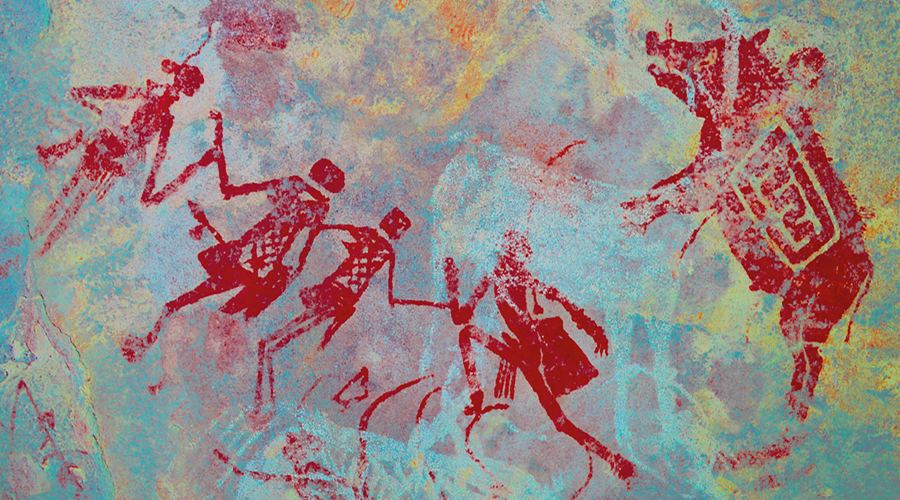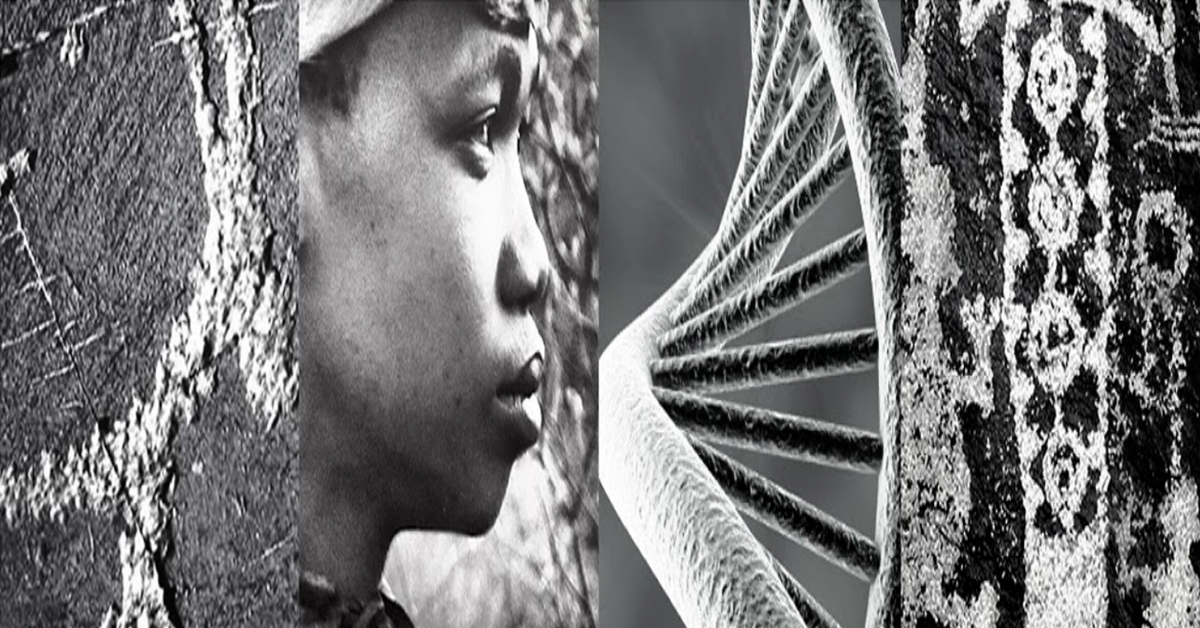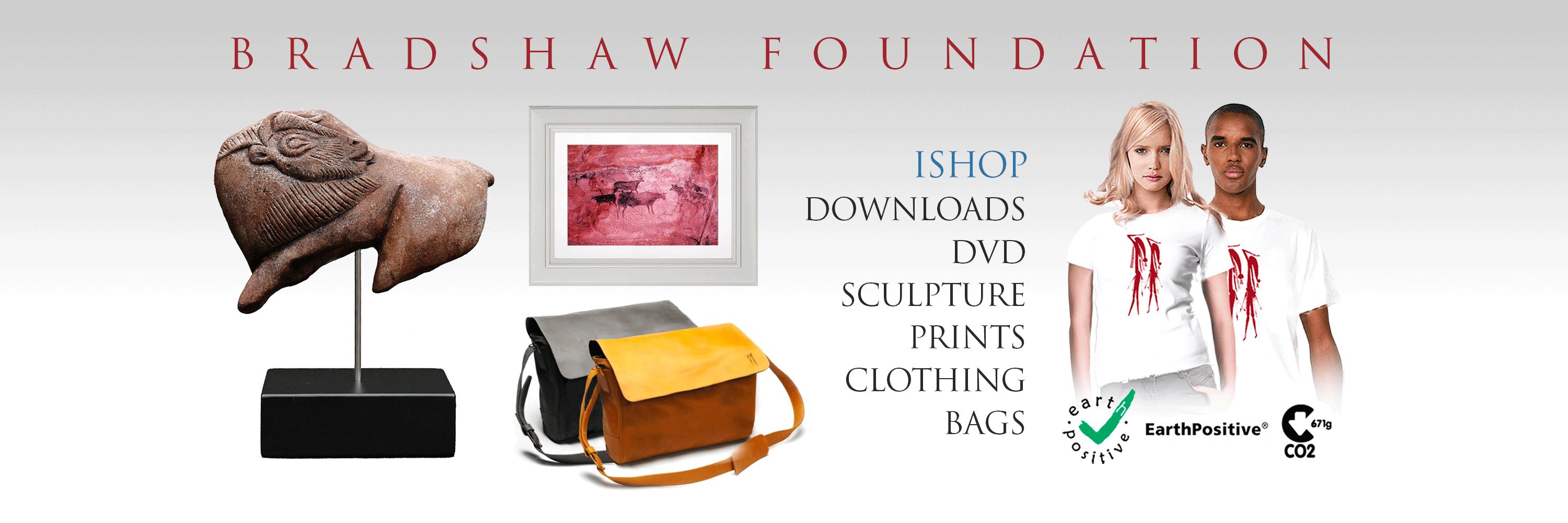


An article on www.westerndigs.org by Blake de Pastino - Hallucinogenic Plants May Be Key to Decoding Ancient Southwestern Paintings - reports on work being carried out in the United States on several rock art sites in southern New Mexico. Botanical clues are providing archaeologists with possible explanations for the abstract motifs found in the pictographs, or cave paintings.
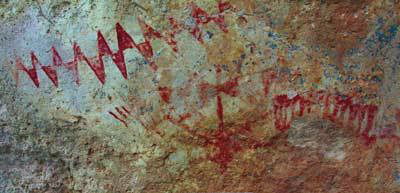
Located in the Chihuahuan Desert, which straddles the United States-Mexico border in the central and northern portions of the Mexican Plateau, over 20 rock art panels have been found bearing the same distinctive symbols: repeated series of triangles painted in combinations of red, yellow, and black.
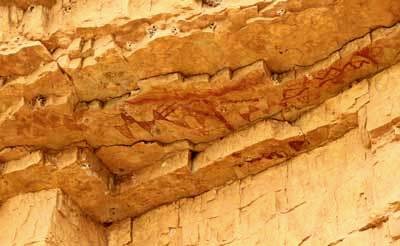
At each of these sites, archaeologists have noticed similarities between the rock art itself as well as the flora. Hallucinogenic plants were found growing beneath the triangle designs, including a particularly potent species of wild tobacco and the potentially deadly psychedelic known as datura.
Dr. Lawrence Loendorf, president of the archaeological firm Sacred Sites Research, believes that the plants may be a kind of living artifact, left there intentionally or unintentionally, for millenia by the artists, who consumed the plants for altered states of consciousness in association with the rock art painting. This may have been a shamanic process with ceremonial purposes.
The region that Loendorf and his colleagues have been exploring was once home to the Jornada Mogollon, a culture of foraging farmers similar to the early Ancestral Puebloans, who occupied the territory from about the 5th to the 15th centuries. This culture, it is argued, created the pictographs, as well as crafting cedorated pottery known today as El Paso phase ceramics.
The rock art sites being studied in this region all featured the triangle motifs and sherds of Jornadan pottery. The pottery has been radiocarbon dated to around 1000 CE.
Editor's note:
The scientific literature has a host of images drawn by people during or directly after they were experiencing hallucinations induced by drugs, or direct electrical stimulation of the visual cortex of the brain. One can argue that there is a clear commonality between hallucinations and prehistoric geometric motifs, such as the kerbstones at Brú na Bóinne.
The universal geometric motifs emerge from activity in what is known as the primary visual cortex of our brains. This is the very first stage of processing, where the information captured by our eyes enters the cortex of our brains. The geometric forms can be perceived directly during hallucinations, and this supports the hypotheses by Heinrich Klüver, David Lewis-Williams and Jeremy Dronfield, that rock paintings by shamanistic artists are simply an accurate record of the artists' visions: the artists could have been drawing what they were seeing, in a very literal sense. It is possible that these geometric motifs are infact 'natural motifs' for our brains. We are now in the realm of 'geometric neuro-aesthetics'.
It is possible that the geometric motifs appear in the art of hallucinators as well as non-hallucinators; for the latter because these forms are 'natural motifs' for our brains. The geometric motifs that occur most frequently in works of art that we consider pleasing may be the ones that activate the natural baseline activity modes of the visual cortex: they may be more effective at stimulating a large-scale pattern of activity in the visual cortex, and more aesthetically pleasing than motifs which do not correspond to the intrinsic patterns of activity.
Have a look at our section on Ancient Symbols in Rock Art by Professor John Miller of Montana State University, Bozeman:
http://www.bradshawfoundation.com/ancient_symbols_in_rock_art/index.php
Visit the American Rock Art Archive:
http://www.bradshawfoundation.com/america/index.php
Images: Lawrence Loendorf
by Bradshaw Foundation
Monday 30 May 2022
by Bradshaw Foundation
Wednesday 19 January 2022
by Bradshaw Foundation
Thursday 06 January 2022
by Bradshaw Foundation
Monday 06 December 2021
by Bradshaw Foundation
Monday 29 November 2021
by Bradshaw Foundation
Monday 25 October 2021
by Bradshaw Foundation
Monday 12 July 2021
by Bradshaw Foundation
Monday 24 May 2021
by Bradshaw Foundation
Tuesday 20 April 2021
by Bradshaw Foundation
Thursday 01 April 2021
by Bradshaw Foundation
Tuesday 23 February 2021
by Bradshaw Foundation
Thursday 14 January 2021
by Bradshaw Foundation
Friday 18 December 2020
by Bradshaw Foundation
Sunday 06 December 2020
by Bradshaw Foundation
Thursday 26 November 2020
by Bradshaw Foundation
Wednesday 07 October 2020
by Bradshaw Foundation
Monday 30 May 2022
by Bradshaw Foundation
Wednesday 19 January 2022
by Bradshaw Foundation
Thursday 06 January 2022
by Bradshaw Foundation
Monday 06 December 2021
by Bradshaw Foundation
Monday 29 November 2021
by Bradshaw Foundation
Monday 25 October 2021
by Bradshaw Foundation
Monday 12 July 2021
by Bradshaw Foundation
Monday 24 May 2021
by Bradshaw Foundation
Tuesday 20 April 2021
by Bradshaw Foundation
Thursday 01 April 2021
by Bradshaw Foundation
Tuesday 23 February 2021
by Bradshaw Foundation
Thursday 14 January 2021
by Bradshaw Foundation
Friday 18 December 2020
by Bradshaw Foundation
Sunday 06 December 2020
by Bradshaw Foundation
Thursday 26 November 2020
by Bradshaw Foundation
Wednesday 07 October 2020
Friend of the Foundation
